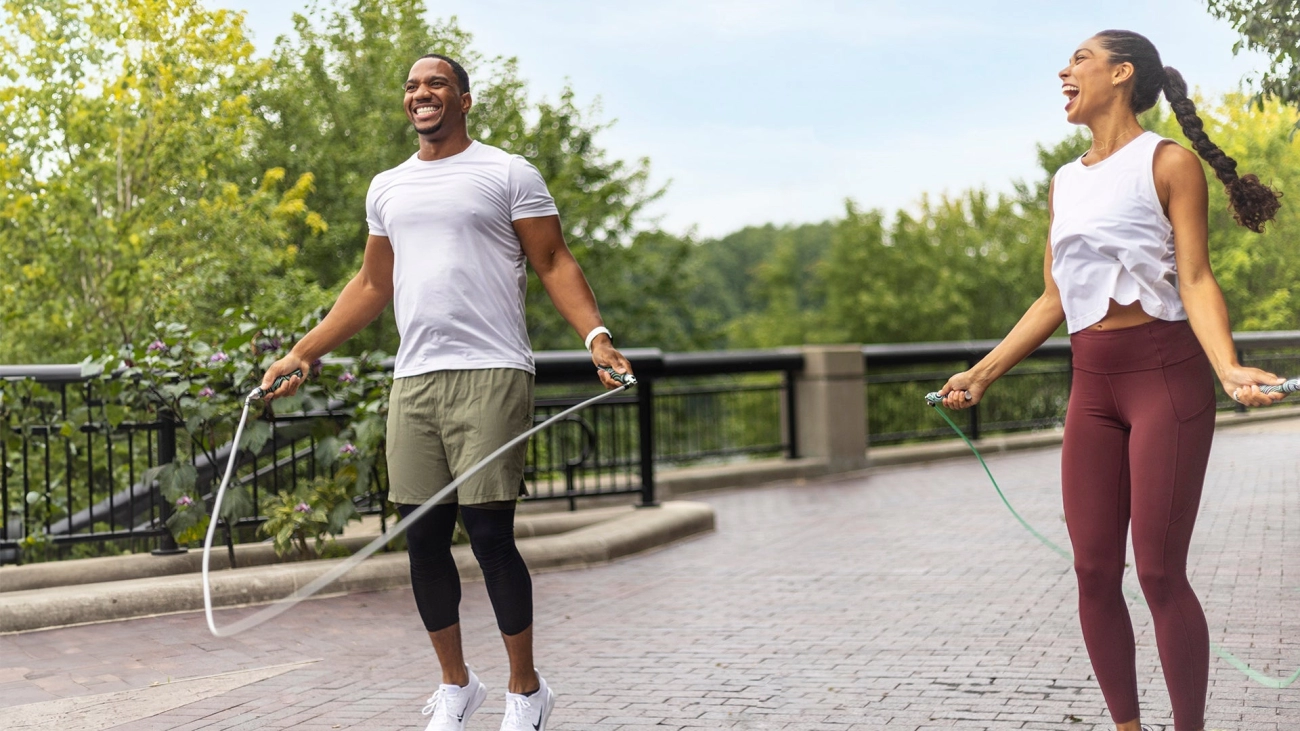Skipping Rope Types and Uses
Choosing the right skipping rope starts with understanding the different types of skipping ropes and their specific uses. When making your own DIY skipping rope, selecting the appropriate material plays a crucial role in how well the rope performs and how comfortable it feels during use.
Common Types of Skipping Ropes
-
PVC Jump Ropes
Lightweight and flexible, PVC ropes are excellent for beginners and general fitness. They spin quickly, making them perfect for speed jumping and cardio workouts.
-
Leather Ropes
Known for durability and smooth rotation, leather skipping ropes offer a classic feel. They are often preferred for outdoor use and skill training but may require proper maintenance to avoid wear.
-
Beaded Jump Ropes
These ropes combine a nylon core with plastic beads, providing weight and visual feedback on rotation. They are popular for kids and beginner jumpers because the beads help with rhythm and timing.
-
Weighted Jump Ropes
Designed for advanced training, these ropes include added weight either in the handles or rope itself to increase resistance, improving strength and conditioning during workouts.
How Material Choice Affects Your DIY Skipping Rope
The material you select dramatically impacts several factors:
- Durability: PVC and leather ropes tend to last longer than fabric alternatives.
- Flexibility: PVC ropes offer more flexibility, promoting faster spins. Weighted ropes provide resistance but may be less agile.
- Grip Comfort: Handle material and rope coating affect how comfortable the rope feels during extended use.
- Noise Level: Beaded ropes tend to be noisier than PVC or leather, which might influence indoor usage.
Choosing Your Skipping Rope Based on Use
To build the perfect DIY skipping rope, consider the primary purpose:
- Fitness and Cardio Workouts: Lightweight PVC ropes or weighted ropes for strength training are ideal.
- Kids Play and Beginners: Beaded ropes help with coordination and timing; they are also visually engaging for children.
- Advanced Training and Skill Development: Leather ropes or weighted ropes provide the control and resistance needed for complex tricks and endurance.
By aligning your DIY skipping rope material and type with your intended use, you ensure better effectiveness, comfort, and longevity. This foundational choice sets the stage for a successful and enjoyable skipping experience.
Materials You Will Need to Make a Skipping Rope
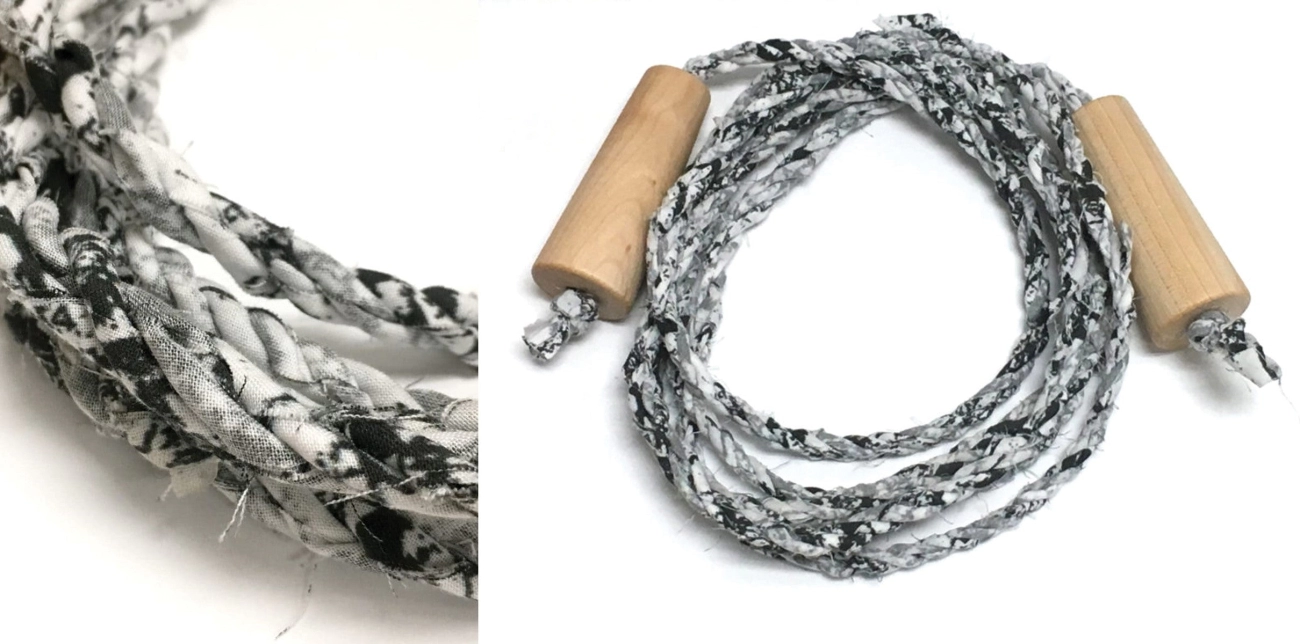
When making a DIY skipping rope, having the right materials is essential to ensure your rope is durable, comfortable, and suited to your needs. Here’s a detailed list of what you’ll need along with tips on where to find affordable, quality supplies both locally and online.
Essential Materials for a Homemade Jump Rope
-
Rope: Choose the best rope based on your intended use. Common options include:
- PVC rope – lightweight and flexible, ideal for fitness and beginners.
- Leather rope – durable and offers a good swing, perfect for kids and casual use.
- Beaded rope – adds weight and sound, great for rhythm and kids.
- Weighted rope – usually PVC or leather with added weight, for advanced training.
-
Handles: Can be purchased or made from wood, plastic, or metal.
- Pre-made handles designed for skipping ropes often come with attachment points.
- DIY handles can be crafted from thick dowels or repurposed grips.
-
Cutters: Sharp scissors or wire cutters to trim the rope to your desired length.
-
End Caps or Stoppers: Plastic or metal caps to secure the ends and prevent fraying.
-
Connectors: Small metal crimps or clamps to attach the rope securely to the handles.
-
Grip Tape or Coating (Optional): For adding comfort and extra grip on the handles.
-
Decorative Items (Optional): Beads, reflective tape, or paint for personalization.
Where to Source Affordable Quality Materials
- Local Sporting Goods Stores: Often have PVC ropes, handles, and cutters at reasonable prices.
- Hardware Stores: Good for dowels, clamps, and cutting tools.
- Craft Stores: Ideal for decorative elements like beads or grip tape.
- Online Retailers: Websites like Amazon, JumpRopeWholesale, or specialty stores provide a wide selection of skipping rope materials, often in bulk and at discounts.
- Dollar Stores or Thrift Shops: Great for inexpensive handles or repurposing materials.
Safety Tips on Material Selection
- Durability: Look for ropes that resist fraying and handles that won’t crack under pressure.
- Flexibility: Your rope should swing freely without stiffness to avoid tripping.
- Grip: Handles need a non-slip surface to prevent accidents, especially during sweaty workouts.
- Weight: Avoid heavy materials unless you want a weighted skipping rope for training.
- Non-toxic Materials: Ensure any coatings or tapes are safe for skin contact, especially for kids.
By choosing the right materials carefully, your homemade skipping rope will serve you well, fit your needs, and stay safe during use.
Step by Step Guide to Making Your Own Skipping Rope
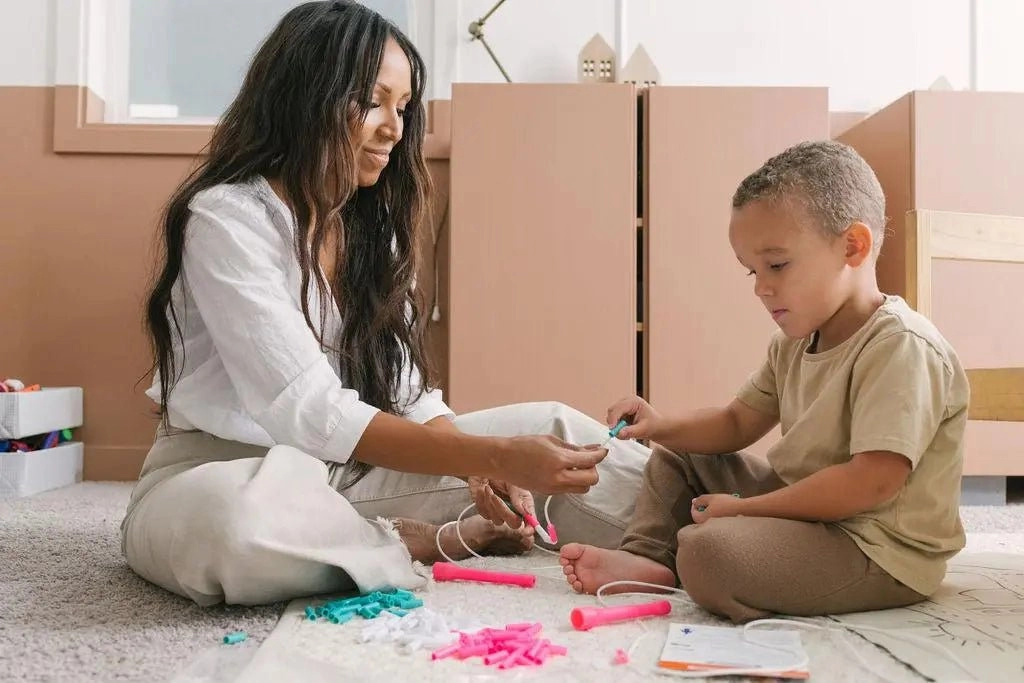
Making a DIY skipping rope is simple when you break it down into clear steps. Here’s how to create a custom skipping rope that matches your needs, whether for fitness, kids, or advanced training.
Measure and Cut the Rope to the Correct Length
- Measure your height first to determine the ideal rope length. A simple rule: stand on the middle of the rope and pull the handles up—they should reach your armpits.
- Use a measuring tape to mark the correct length on the rope.
- Cut the rope carefully using sharp scissors or rope cutters to avoid fraying.
- If you’re making ropes for kids, leave a little extra length for growth and adjustment.
Prepare and Attach the Handles
- You can use store-bought handles designed for skipping ropes or make your own from lightweight PVC pipe or wooden dowels.
- For DIY handles, sand edges to avoid splinters and drill holes or attach clamps for the rope.
- Thread the rope through the handle holes. If handles have internal openings, insert the rope inside.
- Ensure a snug fit so handles don’t slip during use.
Secure the Ends of the Rope
- Use knots, crimps, or glue to fix the rope in place inside the handle.
- Common options include:
- Strong knots like double overhand for a DIY solution.
- Metal crimps or sleeves for a professional, durable finish.
- Applying a small amount of super glue or epoxy for extra hold, especially if knots alone aren’t enough.
- Make sure the ends are secure but do not restrict rope movement.
Test and Adjust the Length
- Try the skipping rope by swinging it overhead and jumping through it.
- The rope should clear your feet easily without dragging or being too long.
- If it’s still too long or short, re-cut or reattach the handles to adjust.
- You can also tie small knots near handles temporarily for quick length tweaks.
Optional Customization with Weight or Decoration
- For weighted skipping ropes, add small metal weights inside the handles or use thicker ropes.
- Decorate with grip tape or colored electrical tape for better hold and style.
- Add beads, reflective tape, or paint for visibility and personality.
- These custom touches can improve training efficiency or make skipping more fun for kids.
Following these steps, you’ll have a custom skipping rope made to fit your height, style, and fitness level. It’s an affordable, personal way to keep active with a rope built just for you.
Tips for Customizing and Enhancing Your Skipping Rope
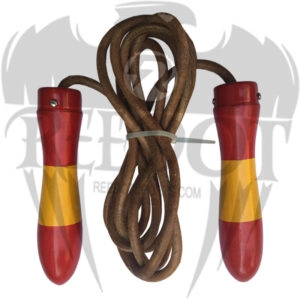
Personalizing your DIY skipping rope not only makes it unique but can boost your workout experience. Here are some practical ways to upgrade your homemade jump rope for better performance and style.
Use Weighted Handles or Ropes for Training Benefits
- Weighted handles or adding small weights inside your rope can increase resistance, improving strength and endurance during workouts.
- Choose weights between 0.5 to 2 pounds per handle depending on your fitness level. Avoid over-weighting if you’re a beginner to prevent strain.
- Weighted ropes help develop wrist and forearm muscles, useful for advanced training and speed jumping routines.
- Consider removable weights so you can customize the intensity based on your session goals.
Add Grip Tape or Coatings for Comfort
- Wrapping the handles with grip tape or applying a textured coating enhances comfort and prevents slipping, especially when your hands get sweaty.
- Use non-slip materials like athletic tape, silicone sleeves, or rubberized grips for a solid hold.
- Ensure the grip is snug but not too tight, so it feels natural and reduces hand fatigue during longer workouts.
Choose Decorative Options for Style and Visibility
- Customize the look of your skipping rope using colorful ropes, beads, or reflective tape to make it both fun and functional.
- Beaded jump ropes add weight and make a satisfying sound, popular for kids and beginners.
- Reflective materials or bright colors enhance visibility if you skip outdoors at dusk or dawn — an important safety feature.
- You can add personalized decals, small charms, or paint on handles to make your skipping rope truly one of a kind.
By focusing on adding weight, improving grip, and personalizing your rope’s appearance, you create a custom skipping rope that meets your training needs while reflecting your style. These simple upgrades help prolong your rope’s lifespan and make skipping more enjoyable.
Maintenance and Safety Tips for Skipping Ropes
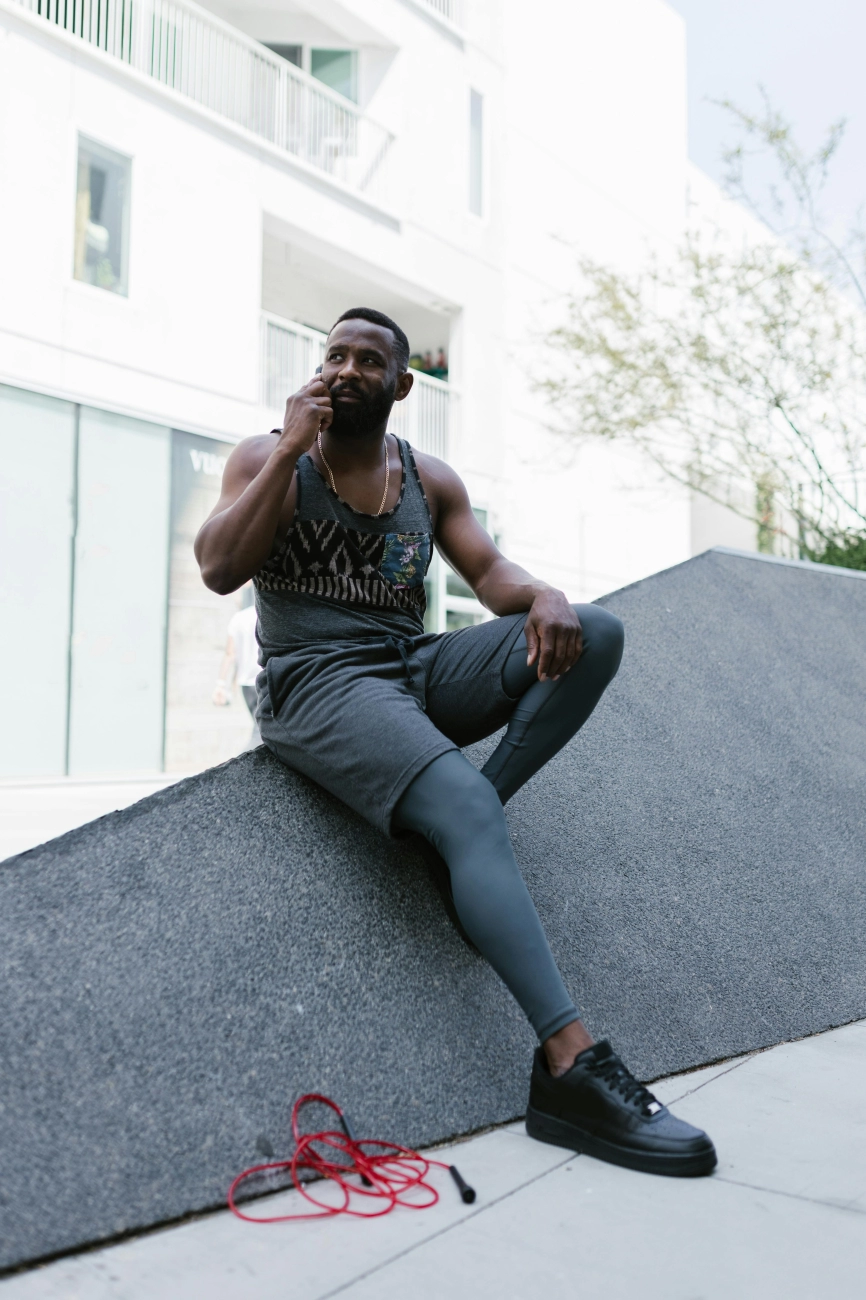
Taking proper care of your skipping rope is key to extending its lifespan and ensuring smooth, safe workouts every time you jump. Here are some essential tips to keep your DIY or store-bought rope in top shape.
How to Care for Your Skipping Rope
- Store it properly: Avoid leaving your rope tangled or folded tightly. Hang it or coil it loosely to prevent kinks and wear.
- Keep it clean: Wipe the rope and handles regularly with a damp cloth to remove sweat, dirt, and dust. For PVC or leather ropes, a mild soap solution works well but dry them completely before use.
- Avoid rough surfaces: Skipping ropes, especially homemade versions with delicate materials, wear out faster on concrete or asphalt. Use a smooth, flat surface like wood flooring or gym mats when possible.
- Check flexibility and grip: Over time, ropes can become stiff or handles lose grip. If grips feel slippery, consider adding grip tape. If the rope stiffens, a little gentle bending can help restore flexibility.
Checking for Wear and Tear Regularly
- Inspect the rope for fraying or cracks: Pay close attention to high-use spots near the handles and ends. Frayed ropes can snap unexpectedly.
- Examine the handles and attachments: Make sure knots, crimps, or glue securing the rope to handles are intact and firm.
- Look for hardness or brittleness: Materials like PVC may dry out or crack with age, while leather can dry and stiffen. Replace parts if you spot significant wear.
- Check weighted ropes carefully: If your DIY rope includes weights, ensure these are secure and not causing uneven wear on the rope.
Safety Precautions During Use
- Choose the right length and adjust properly: A rope too long or too short increases tripping risk. Test your rope length and trim or extend with care.
- Clear your jumping area: Make sure there’s enough space free of obstacles, furniture, and people to prevent accidents.
- Wear proper footwear: Use supportive, non-slip shoes to reduce impact stress and avoid slips.
- Warm up before jumping: This reduces injury risk to knees and ankles.
- Replace worn ropes immediately: Don’t wait for a rope to break mid-jump. Regular inspections let you catch problems before they cause injury.
By following these maintenance and safety tips, you’ll get the best performance from your skipping rope while keeping your workouts safe and enjoyable. Regular care also cuts down on replacement costs, helping you stick to your fitness goals without disruption.
When to Buy vs Make Your Skipping Rope
Deciding whether to make your own skipping rope or buy a professional rope depends on your needs, budget, and skill level. Both options have their pros and cons, especially when it comes to performance, durability, and customization.
Pros and Cons of DIY Skipping Ropes
DIY skipping ropes are great if you want a personalized rope that fits your exact size and style. Making your own lets you choose materials, handles, and add custom features like weights or beads. It’s fun and can save money when done right.
-
Pros:
- Custom length and handle design
- Affordable with locally sourced materials
- Great for casual use or kids’ play
- Opportunity to add personal touches like color or grip tape
-
Cons:
- May lack the durability of professional ropes
- Handles and materials might not be as ergonomic or high quality
- Time-consuming to make and adjust
- Not ideal for advanced training or competitive use
Benefits of Professional Skipping Ropes
Purchasing a professional skipping rope from a trusted supplier like JumpRopeWholesale offers quality and performance that DIY ropes can’t always match. These ropes are designed with specialized materials, precision handles, and consistent weight distribution ideal for all levels from beginners to pros.
- Designed for durability, speed, and smooth rotation
- Ergonomic handles with high-quality grips
- Available in weighted or speed rope varieties for tailored training
- Manufactured with consistent quality control
Budget Considerations
If budget is tight, DIY skipping ropes provide a cost-effective solution, especially for basic fitness or kids’ activities. However, if you’re serious about skipping as a workout or sport, investing in a professional rope can actually save money in the long run due to its longevity and performance, meaning fewer replacements and less frustration.
- DIY ropes can start under $10 with basic materials
- Quality professional ropes range from $20 to $60+ depending on features
- Consider the cost of tools and time for DIY builds
- Factor in warranty and customer support with professional purchases
When to Choose Each
- Make your skipping rope if you want an affordable, customizable rope mainly for casual fitness, kids, or a quick DIY project.
- Buy a professional skipping rope if you need reliability, advanced features, and performance for serious training or competition.
both options work well but align your choice with your training goals, budget, and how much time you want to spend on making versus using your skipping rope. Suppliers like JumpRopeWholesale provide specialized ropes that can really enhance your skipping experience when it counts.
Bonus Fun Skipping Rope Tricks and Uses
Skipping ropes aren’t just for basic jumping—they can be a fun, versatile tool for fitness and play. Whether you’re making a DIY skipping rope or using a store-bought one, there’s a lot you can do beyond simple jumps.
Beginner Friendly Skipping Exercises
If you’re new to skipping or making your own jump rope, start with easy exercises to build rhythm and confidence:
- Basic Jump: Both feet land together, simple and steady. Great for warming up.
- Alternate Foot Step: Mimics running in place; works on coordination.
- Side-to-Side Jumps: Jump from side to side to engage more muscles and improve agility.
- Slow and Steady: Jump slowly, focusing on timing and comfort with your custom rope length.
These exercises help develop endurance and technique before moving to advanced tricks.
Using Skipping in Fitness Routines
Skipping is a powerful cardio workout that fits well into daily fitness plans. Here’s how to make it count:
- Warm-Up and Cool-Down: Use light skipping for 3-5 minutes to get your heart rate ready or bring it down.
- Interval Training: Alternate 30 seconds of fast skipping with 15-20 seconds rest to boost cardio fitness.
- Strength and Speed: Add weighted ropes or handles if you’ve made a customized skipping rope with weights.
- Full Body Engagement: Try skipping while doing arm circles or squats to work multiple muscle groups.
Incorporating DIY skipping ropes into your fitness routine can keep workouts fresh and cost-effective.
Creative Uses for Homemade Skipping Ropes
Your custom skipping rope can be handy beyond exercise and play:
- Coordination Games for Kids: Use colorful beads or decorations on your homemade rope to make it more appealing for children.
- Group Activities: Organize double dutch or relay skipping with friends and family for team fun.
- Balance and Agility Drills: Use your skipping rope laid flat on the ground as a guide for balance training.
- Decor and Gifts: Personalized jump ropes with unique handles or designs make great gifts, especially for active kids.
With a little imagination, your skipping rope becomes more than just a fitness tool—it’s a way to make exercise fun and creative.
Remember, whether you’re practicing beginner moves or mixing skipping into workouts, always use a rope adjusted to your height and with grips that feel secure. This keeps your routine safe, comfortable, and effective.


